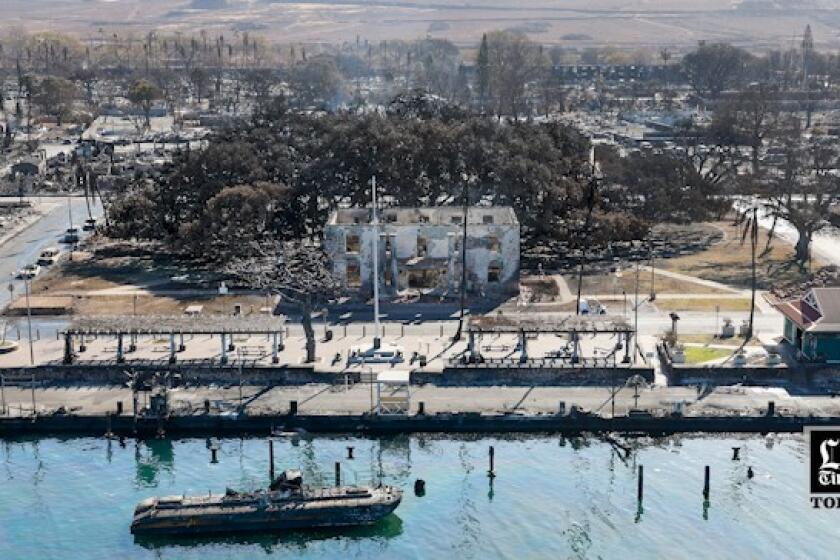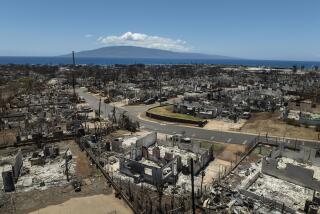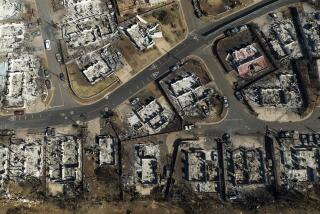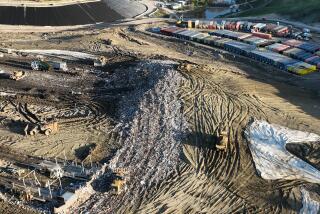Maui’s toxic debris could fill 5 football fields 5 stories deep. Where will it end up?
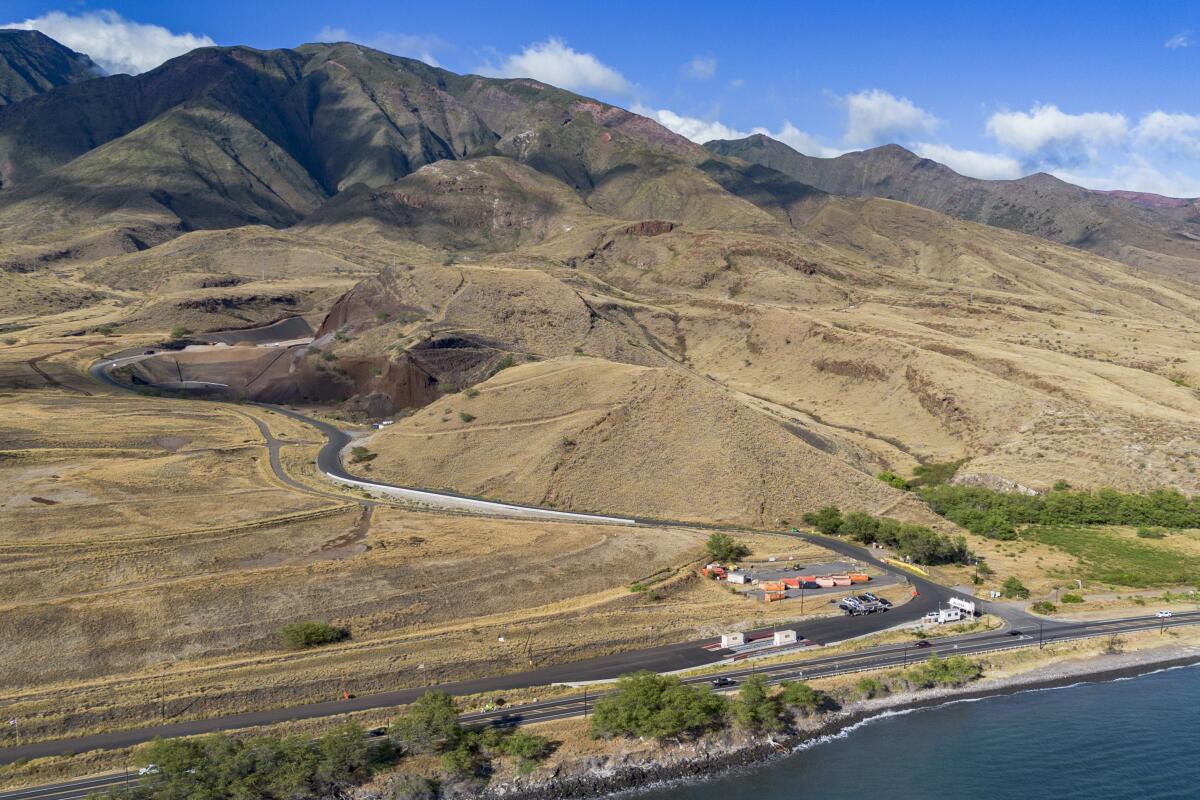
LAHAINA, Hawaii — Hinano Rodrigues remembers being 4 or 5 years old, carrying a bucket across a highway to the ocean in the Maui community where he still lives.
At dawn, he would accompany his grandmother to a reef at low tide, where she plucked black snails, spiny lobsters and spiky sea urchins from the craggy rock. In Hawaiian, she would instruct him to break off a branch of kiawe, a type of mesquite, to tease out an octopus hiding in a hole.
It taught Rodrigues, 71, the value of ahupuaa, a Native Hawaiian system for dividing land from the mountains down to the ocean, with the residents of each section living off the land and waters within it.
But now the section where he lives and where his ancestors have always lived — the Olowalu ahupuaa — is also home to a temporary landfill being used to store debris from the deadly wildfire that decimated the historic nearby town of Lahaina last summer, destroying thousands of buildings and killing 102 people. It’s enough refuse to cover five football fields five stories high, including soil contaminated with lead and arsenic.
A controversy over whether that site is truly temporary — and over where the debris might finally wind up — has sparked a fierce legal fight with tens of millions of dollars at stake, not to mention a priceless ecosystem rich with coral, manta rays and other sea life just offshore.
‘We’re going to survive and it’s going to come back’: A year after Maui wildfire, Lahaina presses on
Hawaiians have faced a year of challenges since the deadliest U.S. wildfire in a century devastated the historic Maui town of Lahaina in 2023.
“Why would you go put opala like this in a place that’s clean?” Rodrigues asked, using a Hawaiian word for trash.
Handling debris after large wildfires is always a logistical challenge. After California’s 2018 Camp fire killed 85 people and burned down most of the town of Paradise, more than 300,000 truckloads were required to transport the debris to three landfills, said Cole Glenwright, the deputy incident commander of the debris removal operation. The whole process took about a year.
It’s taking much longer on Maui, given environmental concerns, how long it has taken to clear destroyed lots, worries about Native Hawaiian cultural sites, and tussling over the ownership of a potential permanent site for the debris.
The temporary landfill in Olowalu is a former quarry on state-owned land and close to Lahaina, which made it a convenient choice for quickly storing the debris being cleared away so the town can rebuild. Officials believe its arid climate will reduce the risk of contamination spreading, and they say they’ve taken many precautions, including using thick liner and stormwater controls to contain runoff.
Officials have analyzed samples of soil, groundwater and surface water and found no traces of contamination being released, according to a quarterly report released in July.
But the site is just uphill from a coral reef, and some locals fear an ecological catastrophe if pollution does reach the water.
The operation of the site also threatens sacred Hawaiian shrines and altars and desecrates ancient Hawaiian burial sites, according to a lawsuit filed by two people who don’t want the debris in Olowalu. One of the plaintiffs is Manoa Ka’io Martin, whose ancestors are among those buried nearby. The other is farmer Eddy Garcia, who worries about contamination of the food he grows, including taro, bananas, pineapples and star fruit.
Amid demands to remove the debris from Olowalu, Maui County is seeking to seize a privately owned former quarry near the Central Maui Landfill across the island to use as a permanent dump site.
That has prompted another legal fight. The company that owns the land, Komar Maui Properties, doesn’t want to give it up.
Komar bought the land in 2015 with plans to build a private landfill, but it says permitting issues have stalled development. It is contesting the county’s effort to take the property by eminent domain — a process by which governments can seize private land for public use, with fair compensation for the owner. A federal judge has prevented the county from taking immediate possession while the lawsuit plays out.
Andy Naden, general counsel and executive vice president of Komar Investments, the parent company of Komar Maui Properties, says the county moved to seize its land only after learning the Federal Emergency Management Agency would pay “tipping fees” associated with disposing of the Lahaina debris — fees typically paid by weight to landfill owners. Maui County charges a tipping fee of nearly $110 per ton for municipal solid waste.
“FEMA is going to dump 400,000 tons into this hole,” Naden said. “That equates to $44 million that the federal government is going to give to whoever has the hole.”
Shayne Agawa, director of Maui’s Department of Environmental Management, disputed that. He said his department has long been interested in acquiring the land as part of plans to expand the adjacent public landfill.
Agawa, who lives in Olowalu, said the county doesn’t want the debris to remain at the temporary site. But it has yet to come up with a backup plan in case the court blocks the county from seizing Komar’s land. Officials are looking at other nearby parcels, he said.
To respond to cultural concerns, Maui officials consulted with the county’s archaeologist, Janet Six, and FEMA had one of its historic sites advisors assess the location. Six told the Associated Press she could not rule out the presence of ancient cultural sites or burial grounds but noted that the area was previously disturbed by mining. FEMA found that no historic properties would be affected.
The lawsuit filed by Garcia and Martin asserted that the construction and operation of the temporary dump has in fact damaged or desecrated such sites by exposing them to toxic material, in violation of Martin’s spiritual practices.
Garcia said he feels uneasy as rumbling trucks haul debris up the road next to his farm. He worries one heavy bout of rain will cause toxins from the debris to contaminate the food he grows.
The pair dropped their lawsuit after the county announced plans for the permanent site in central Maui, but their lawyer is considering their next legal steps while the debris sits in Olowalu.
“I have a feeling they’re going to try to make it permanent and just say, ‘Sorry, we can’t move it to the other site,’” Garcia said.
Further complicating the issue is that the ashes or bones of some fire victims might be mingled in the debris. Raenelle Stewart’s 97-year-old grandmother died in the fire. Stewart often wonders if the ashes the family received contained all her remains. The fire debris should be kept nearby, she said.
“I think they should designate a spot in Lahaina for it,” she said. “I don’t think it’s so toxic that the earth can’t handle.”
Randy Awo, a retired administrator in the state Department of Land and Natural Resources, is a Native Hawaiian resident of Maui. He’d prefer to have the debris shipped out of state — an option officials rejected as too expensive.
Awo called the concerns about remains “a sacred topic” and said he does not want to be insensitive to families who lost loved ones. But, he added, the community must also protect Maui’s finite amount of land.
“When our environment is subjected to toxins that threaten life itself,” Awo said, “we have to start making decisions that weigh both.”
Rush and Sinco Kelleher write for the Associated Press.
More to Read
Sign up for Essential California
The most important California stories and recommendations in your inbox every morning.
You may occasionally receive promotional content from the Los Angeles Times.

